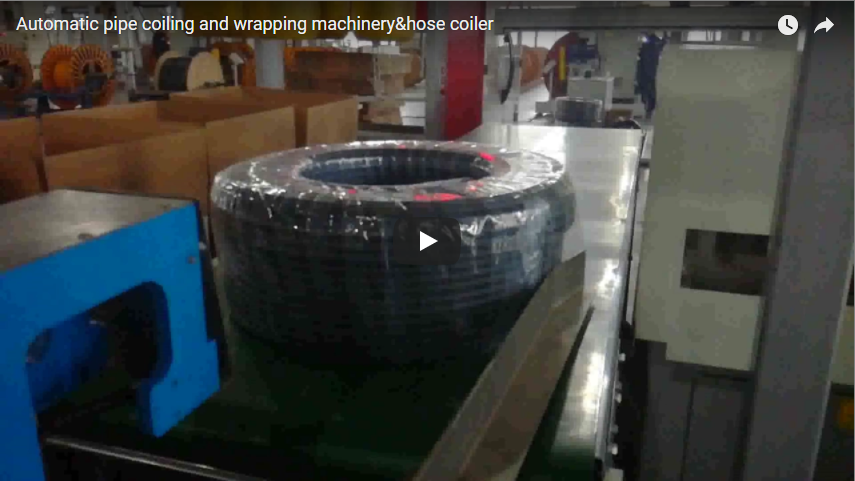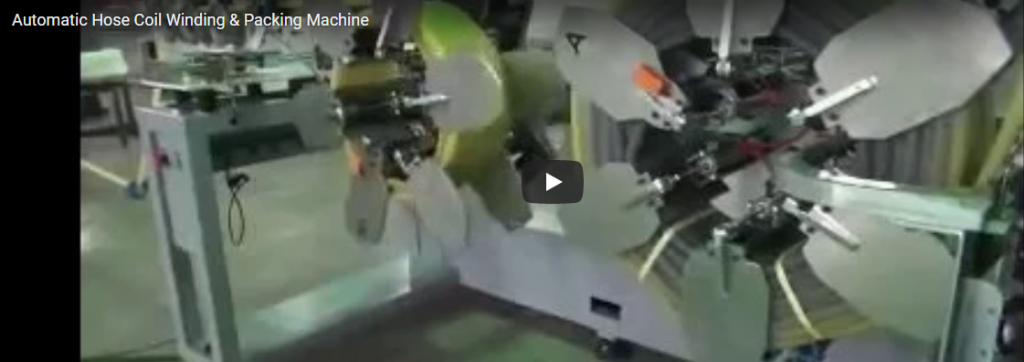Enhancing Efficiency in Pipe Manufacturing: Advanced Automatic HDPE Pipe Coiling and Strapping Systems
The handling and packaging of High-Density Polyethylene (HDPE) pipes present significant logistical challenges for manufacturers and distributors. Traditional manual or semi-automated methods often struggle to keep pace with modern production speeds, leading to bottlenecks, inconsistent quality, and increased labor costs. The solution lies in fully automated, inline systems designed for precision coiling and secure strapping.
This article delves into the technology and benefits of advanced automatic HDPE pipe coilers, focusing on systems that integrate coiling and strapping operations seamlessly within the production line. An example of such technology is the in-line vertical packaging machine for HDPE pipe coiling & strapping, which utilizes robust Polypropylene (PP) strapping material for secure unitization.
Core Technology: Precision Engineering in Automated Coiling
Automated HDPE pipe coiling systems represent a significant leap forward from manual handling. These machines are engineered for high-speed operation and integration directly into the extrusion line, ensuring a continuous and efficient workflow.
The operational sequence typically involves:
- Synchronization: The coiler's speed is precisely synchronized with the upstream extruder output, often employing sophisticated dancer arms or accumulator systems referenced in process control patents (e.g., concepts similar to those managing web tension in paper or film industries) to maintain consistent pipe tension.
- Pipe Guidance: Precision rollers and guides ensure the pipe is fed smoothly onto the coiling mandrel or reel without kinking or excessive stress.
- Tension Control: Advanced systems utilize load cells or servo-driven feedback loops to maintain optimal winding tension. This is critical, as research into polymer mechanics highlights that improper tension during coiling can induce residual stress or cause deformation (ovality) in the HDPE pipe, potentially compromising its long-term performance characteristics as defined by standards like ASTM D3350.
- Precision Winding: Programmable Logic Controllers (PLCs) manage the winding pattern, ensuring neat, tightly packed coils of predetermined diameters and widths. Layer-by-layer winding capability optimizes coil density and stability.
- Automated Strapping: Once the desired coil length is achieved, the system automatically applies PP straps at designated points. PP strapping is widely chosen for its tensile strength, elongation properties, and cost-effectiveness, as documented in packaging industry journals. The strapping heads typically employ heat sealing or friction welding techniques for secure closure.
- Cutting and Ejection: An automated cutter cleanly severs the pipe, and the completed, strapped coil is automatically ejected or transferred to downstream conveying systems, ready for storage or shipment.
Technical Specifications Example: The Pipe 3000 System
Illustrating the capabilities of modern machinery, systems like the conceptual "Pipe 3000" (representative of advanced solutions offered by providers like Fhopepack) showcase key performance indicators:
- Pipe Diameter Range: 40 mm to 160 mm
- Maximum Coiling Speed: Up to 70 meters per minute
- Coil Dimensions: Adjustable (Outer Diameter, Inner Diameter, Width)
- Strapping Material: Polypropylene (PP) Belt
- Strapping Method: Automated heat seal or friction weld
- Control System: PLC with HMI (Human-Machine Interface) for parameter adjustment (e.g., strap tension, coil configuration, speed)
- Operation Mode: Fully Automatic, In-line integration
Operational Advantages and Return on Investment (ROI)
Implementing automated HDPE pipe coiling and strapping systems yields substantial benefits across the value chain:
- Enhanced Throughput and Speed: Operating at speeds like 70 m/min allows the coiling process to match high-speed extrusion lines, eliminating bottlenecks and maximizing overall plant output (OEE - Overall Equipment Effectiveness).
- Improved Product Quality & Consistency: Automated tension control and precision winding produce uniform, stable coils every time. This minimizes pipe damage, prevents ovality issues, and ensures adherence to strict dimensional tolerances crucial for end-use applications.
- Labor Savings and Enhanced Safety: Automation significantly reduces the need for manual handling of heavy, cumbersome pipe lengths, decreasing labor costs and dramatically improving operator safety by minimizing ergonomic risks and potential injuries.
- Material Efficiency: Precise control over coil dimensions and strapping application optimizes the use of strapping material and reduces potential scrap generated from poorly formed or damaged coils.
- Streamlined Logistics and Handling: Neatly coiled and securely strapped bundles are more compact, stable, and easier to handle, store, and transport using forklifts or other material handling equipment. The integrated packaging ensures product protection throughout the distribution process.
System Integration and Adaptability
Modern automated coilers are designed for seamless integration into existing or new production facilities.
- Connectivity: They often feature communication protocols (like EtherNet/IP or PROFINET) enabling integration with plant-wide control systems (SCADA) or Manufacturing Execution Systems (MES) for real-time monitoring, data logging, and production scheduling.
- Customization: As seen in systems allowing parameter adjustments via HMI, manufacturers can easily configure the machine for various HDPE pipe grades, dimensions, pressure ratings, and specific customer coiling requirements without extensive changeover times. This flexibility is vital for producers serving diverse markets.
Meeting Modern Manufacturing Demands
The drive towards automation in industrial manufacturing is relentless, fueled by the need for higher efficiency, consistent quality, and cost competitiveness. The global demand for HDPE pipes in infrastructure, agriculture, and utilities continues to grow, making optimized production processes essential. Automated coiling and strapping systems are no longer a luxury but a necessity for manufacturers aiming to:
- Meet increasing production volume demands.
- Ensure consistent product quality that meets stringent international standards.
- Reduce operational costs and improve profit margins.
- Enhance workplace safety and reduce reliance on manual labor.
Future trends may involve even greater integration of IIoT (Industrial Internet of Things) for predictive maintenance, remote diagnostics, and enhanced data analytics, further optimizing the coiling process.
In conclusion, advanced automatic HDPE pipe coiling and strapping systems provide a robust, efficient, and reliable solution for modern pipe manufacturers and distributors. By automating this critical end-of-line process, companies can significantly boost productivity, ensure superior product quality, lower operational costs, and improve overall safety and logistical efficiency.
For inquiries about advanced HDPE pipe coiling solutions: info@fhopepack.com






